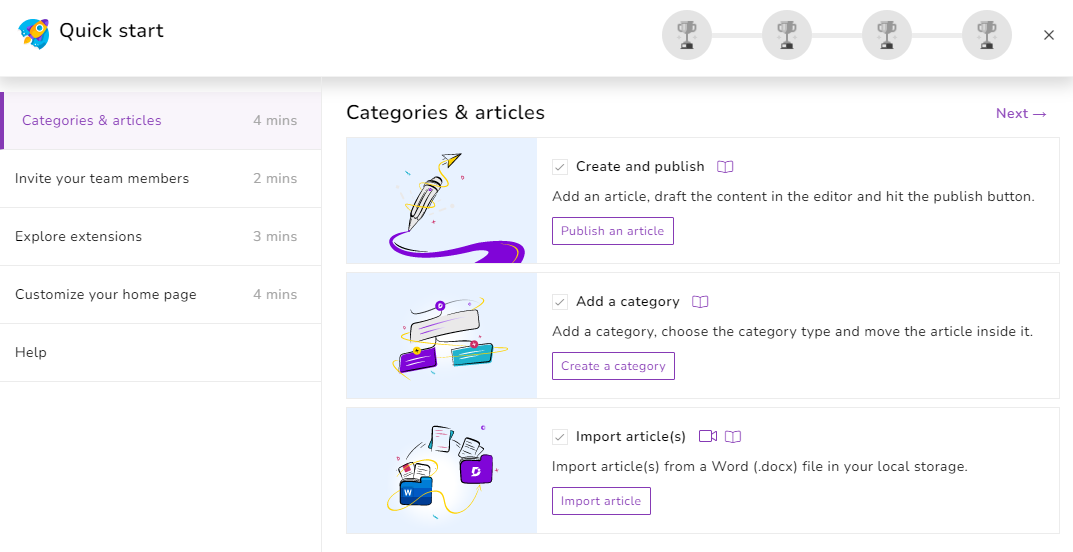You’ve got to start with the customer experience and work back toward the technology – not the other way around. – Steve Jobs
Congratulations on the release of your product! Although early indications of client interest and sales are encouraging, it is crucial to determine whether users are getting the most out of your product.
Did you know it might take a customer between 5 and 7 touchpoints to remember your brand? Product adoption metrics can help with that. You may assess how well your product is being accepted and make changes to enhance the user experience by monitoring metrics like user engagement and revenue growth.
To ensure that your product is not just being used but also being loved, let’s explore the world of product adoption metrics.
What Is Product Adoption?
Product adoption is the process through which a new good or service is embraced and used by its intended market. It’s a turning point when a product goes from being just an idea or concept to becoming widely used and lucrative. Product adoption is a process that involves ongoing care and effort rather than being a one-time event. In-depth knowledge of the target market’s requirements and preferences is necessary.
Why Should You Measure User And Product Adoption?
Businesses may pinpoint problem areas and improve the user experience for their products by monitoring product adoption metrics and KPIs. Additionally, measuring product adoption enables businesses to:
-
-
- Recognize the efficiency of their user acquisition tactics and marketing campaigns
- Determine user requirements and preferences to guide product development
- Improve user retention and engagement rates to lower churn
- Amplify the increase in customer lifetime value and revenue
- Discover upsell opportunities and improve pricing strategies
-
Now, let’s dive into the 12 product adoption metrics and KPIs you need to track.
Product Adoption Metrics And Kpis To Track
Conversion rate
The conversion rate calculates the percentage of users who complete a particular task or activity. This can involve registering for a free trial, joining a paid subscription service, or upgrading to a premium version of your product. You may determine which acquisition channels and campaigns are most successful and optimize them to raise overall conversion rates by tracking conversion rates.
Conversion Rate = (Number of signups / Number of unique visits) x 100
Example: If a website had 1,000 visits last month and 100 signed up for the product, the conversion rate would be 10%.
Feature adoption rate
The percentage of people who use a particular feature or group of features inside your product is measured by the feature adoption rate. You can determine which features are most used by your users and which can benefit from improvement or promotion by monitoring feature adoption rates.
Formula:
Feature Adoption Rate = (Number of users who adopt the new feature / Total number of users) x 100
Example: If a product has 10,000 users and 2,000 tried the new feature, the feature adoption rate would be 20%.
Time-to-activation
Time-to-activation gauges how long it takes a consumer to use your product or activate their account after registering or completing a transaction. You can increase user engagement and reduce churn rates by reducing the time to activation.
Example: If it takes an average of 1 day for users to activate their account after signing up, the time-to-activation would be one day.
Usage Frequency
Usage frequency measures how frequently customers utilize your product. You may spot patterns and trends in user activity and improve the product experience to raise engagement and retention rates by tracking usage frequency.
Time-to-value
The time-to-value metric calculates how long it takes a user to enjoy your product’s benefits. A shorter time-to-value indicates better user satisfaction with the product. You may boost user satisfaction and customer lifetime value by cutting down on time-to-value metrics.
Customer lifetime value
Customer lifetime value (CLV) measures the overall value a customer contributes to your business during their lifetime. You may determine which customers are the most valuable to your brand by watching CLV and which may require extra attention or retention efforts.
Formula:
Customer Lifetime Value = (Revenue per customer x Customer lifespan) – Cost of customer acquisition
Example: If a customer spends $100 every year for five years, and the cost of customer acquisition is $50, the customer lifetime value would be ($100 x 5) – $50 = $450.
Churn rate
The percentage of consumers who discontinue using your product during a specific period is measured by your churn rate. Tracking churn rates allows you to spot potential weak points in the product and take action to enhance the user experience and lower churn.
Formula:
Churn Rate = (Number of customers lost / Total number of customers) x 100
Example: If a product had 100 customers last month and ten stopped using it, the churn rate would be 10%.
NPS Score
The Net Promoter Score (NPS) evaluates how likely consumers are to tell others about a product. Customers are more satisfied with the product when the NPS is higher. By monitoring NPS scores, you may determine which customers will most likely promote your product.
Formula:
NPS Score = % of Promoters – % of Detractors
Example: If 50% of customers are promoters and 20% are detractors, the NPS score would be 30%.
CSAT Score
The Customer Satisfaction (CSAT) Score calculates your customers’ satisfaction with their total product experience. You may identify features of the product that are functioning well and those that could need change to increase customer satisfaction by monitoring CSAT scores.
Formula:
CSAT Score = number of satisfied customers / Total number of customers
Example: If a product had 100 customers and 80 reported being satisfied, the CSAT score would be 80%.
Customer tickets by feature
Customer tickets by feature measure the number of support tickets or queries about particular features of your product. You may discover which features might be confusing or frustrating to users and take action to enhance the user experience by keeping track of customer tickets by feature. Knowledge-based software implementation can reduce the number of support tickets raised by providing customers with self-service options to tackle common issues.
Schedule a demo with one of our experts to take a deeper dive into Document360 Knowledge Base
Book A Demo
Cost-per-acquisition
The cost to acquire a new customer is measured using the term “cost-per-acquisition” (CPA). The most cost-effective acquisition channels and campaigns can be identified through CPA tracking and optimized to reduce overall acquisition costs.
Formula:
Cost-per-Acquisition = Total cost of marketing and sales / Number of new customers
Example: If a business spent $1,000 on marketing and sales last month and acquired 50 new customers, the cost-per-acquisition would be $20.
Upsell Rate
Your upsell rate is the percentage of consumers who upgrade to a premium version of your product or buy extra features or services. You may determine which upsell opportunities are most successful and refine your pricing strategy to boost revenue development by keeping track of upsell rates.
Formula:
Upsell Rate: (Number of customers who upgraded / Total number of customers) x 100
Example: If a product has 1,000 customers and 200 upgraded to a higher-priced plan or additional features, the upsell rate would be 20%.
Benefits Of Measuring Product And User Adoption
Measuring product and user adoption is crucial for businesses looking to succeed. Here are a few advantages of tracking user and product adoption:
Insight into user behavior
Businesses can learn important information about how users interact with their products by monitoring product adoption metrics and KPIs. This can assist them in determining which features are used frequently and which ones might benefit from upgrading.
Identification of adoption barriers
Businesses can detect adoption hurdles with product adoption metrics and KPIs. These barriers stop users from acquiring or continuing the use of a product. Businesses can take action to eradicate these obstacles by identifying them and making the necessary improvements.
Validation of product-market fit
Monitoring product adoption KPIs and metrics can also assist businesses in determining whether their product is fulfilling the needs of the intended market. It is a good sign that the product meets users’ demands if they adopt and use it frequently.
Data-driven decision-making
KPIs give organizations the information they need to make informed choices about their products. Businesses can use this data to analyze product development, marketing, and customer service decisions.
Monitoring product performance
Tracking product adoption metrics and KPIs allows businesses to monitor the performance of their product over time. This can help businesses identify trends and adjust their product strategy as needed.
Also Read: Top Technical Documentation KPIs to Track
How To Pick The Right Product Adoption Metrics
When it comes to product adoption, there are certain factors you must consider when choosing which product adoption metrics or KPIs to track. Here are some of the factors:
1. The who – Who is adopting?
Who is adopting your product is an important consideration when choosing product adoption metrics. Monitoring market-specific indicators is crucial if you have a target market in mind. For instance, if professionals are your target market, you would want to monitor metrics pertaining to adoption rates among professionals.
Metrics to track to understand “the who” include conversion rate, CLTV, and usage frequency.
2. The what – What features do they love?
Monitoring metrics of which features are most well-liked by users is also crucial. Businesses can focus their product development and marketing efforts on the most in-demand by determining the most popular features.
Metrics to track to understand “the what” include CSAT, feature adoption rate, and usage frequency.
3. The When – When does adoption happen?
When choosing product adoption metrics, it’s also important to consider the adoption timing. Businesses might, for instance, keep tabs on indicators like time-to-activation or time-to-value, which can reveal information about how quickly customers adopt a product and recognize its value.
Metrics to track to understand “the when” include time to value and customer ticket by feature.
4. The How – How long do they stay?
Finally, it’s crucial to monitor analytics showing how long people use the product. Metrics like usage frequency, customer lifetime value, and churn rate might be good KPIs to track. Businesses can acquire information on keeping users and lowering churn by monitoring these indicators.
Metrics to track to understand “the how” include churn rate, upsell, and NPS.
Generally speaking, businesses should use product adoption indicators relevant to their target market, product features, and business objectives.
How to Guide Improvement Using Product Adoption Metrics
Following an analysis of your product adoption metrics, you must take action to increase user engagement and retention. To improve product adoption, use these effective strategies:
Identify Adoption Barriers
Metrics on product adoption can aid businesses in identifying the points at which users stop adopting new products. Businesses may identify areas where users are having difficulty and adjust the onboarding process to reduce drop-off and increase adoption rates by evaluating indicators like time-to-activation and usage frequency.
Optimize product development
Businesses may discover which features are most popular with users and what aspects of the product need to be improved by tracking metrics related to feature adoption and usage frequency. This data can be used to prioritize new features that will increase adoption and retention and direct product development efforts.
Provide clear and concise documentation
A product knowledge base should have documentation that is easy to understand and follow. It should provide step-by-step instructions, screenshots, and videos to help users get started with the product.
A product knowledge base should also have a section for frequently asked questions (FAQs). This section should provide answers to common questions that users may have about the product.
An intuitive product documentation software to easily add your content and integrate it with any application. Give Document360 a try!
GET STARTED
Also Read: Concise Documentation: Definition, Benefits, and how to create one
Improve user engagement
Metrics on product adoption can aid businesses in identifying areas where customers are losing interest in the product. Businesses may discover pain points in the user experience and make modifications to raise engagement and lower churn by monitoring indicators like churn rate and customer tickets by feature.
Make a great first impression with onboarding flows
Helping users see the value of your product depends heavily on your onboarding process. Consider redesigning your onboarding to shorten the time it takes for users to know the value of your product and boost satisfaction. To help users through the process, a strong onboarding experience should include welcome pages, product tours, progress indicators, and checklists.

Keep users informed by using in-app feature announcements
The users of your product might not be aware of updated features or updates. Use in-app messages and feature announcements to inform users of new features and guide them toward resources that go into greater depth about the feature. Informing users of the benefits of these new features will promote adoption.
Reach a wider audience with product emails
Certain users won’t use your product very often, which can result in missed opportunities to interact with them. Use email to inform customers about new features, offer advice, and reaffirm the benefits of your product. This can increase usage frequency and motivate customers to utilize your product again.
Also Read: 3 Customer Onboarding Best Practices to Improve Your Conversions
Conclusion
In summary, tracking product adoption metrics is crucial for any company looking to understand better and improve the user experience. Businesses can better understand adoption barriers, confirm product-market fit, and make data-driven decisions to improve overall product performance by measuring and analyzing user behavior.
Businesses need to choose the appropriate metrics to track product adoption. Businesses can utilize the proper KPIs to direct their improvement efforts once they have been identified. Businesses can enhance overall product adoption, cut churn rates, and handle fewer support tickets by boosting customer satisfaction and revenue.
Understanding and improving user experience is essential for business success in today’s competitive industry. Businesses can stay on top of trends and deliver a superior user experience that keeps customers returning for more by using product adoption metrics and KPIs to measure user behavior and drive improvement.




 –
– 

